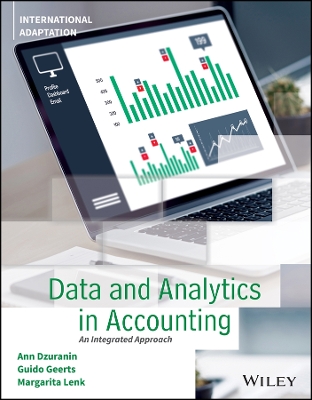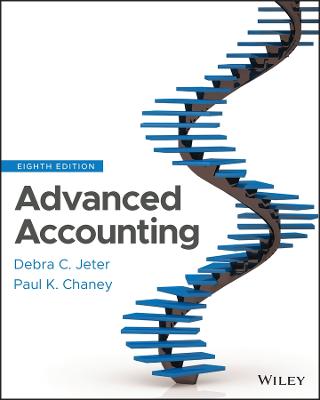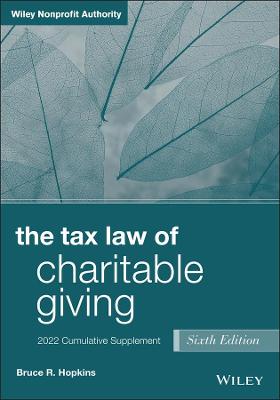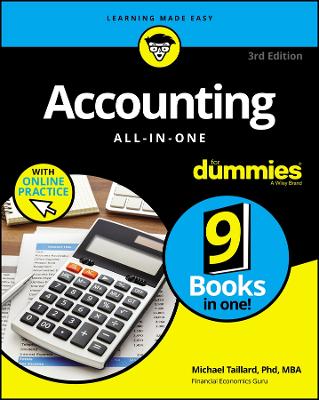Tax Planning and Compliance for Tax-Exempt Organizations
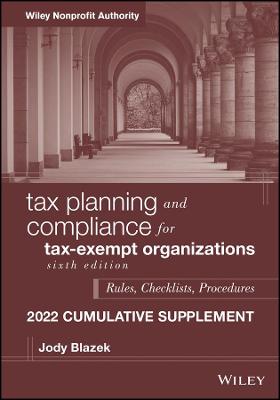 -15%
portes grátis
-15%
portes grátis
Tax Planning and Compliance for Tax-Exempt Organizations
Rules, Checklists, Procedures, 2022 Cumulative Supplement
Blazek, Jody
John Wiley & Sons Inc
06/2022
208
Mole
Inglês
9781119873631
15 a 20 dias
364
Descrição não disponível.
Preface
Part I QUALIFICATIONS OF TAX-EXEMPT ORGANIZATIONS
Chapter 1 Distinguishing Characteristics of Tax-Exempt Organizations
? 1.4 Role of the Internal Revenue Service
? 1.8 Developments Responding to COVID-19
Chapter 2 Qualifying Under IRC ? 501(c)(3)
? 2.2 Operational Test
Chapter 3 Religious Organizations
? 3.2 Churches
Chapter 4 Charitable Organizations
? 4.1 Relief of the Poor
? 4.3 Lessening the Burdens of Government
? 4.5 Advancement of Education and Science
? 4.6 Promotion of Health
Chapter 5 Educational, Scientific, and Literary Purposes and Prevention of Cruelty to Children and Animals
? 5.1 Educational Purposes
Chapter 6 Civic Leagues and Local Associations of Employees: ? 501(c)(4)
? 6.2 Qualifying and Nonqualifying Civic Organizations
Chapter 9 Social Clubs: ? 501(c)(7)
? 9.1 Organizational Requirements and Characteristics
? 9.4 Revenue Tests
Chapter 10 Instrumentalities of Government and Title-Holding Corporations
? 10.6 Requirements for IRC ?501(c)(8) and (c)(10)
Chapter 11 Public Charities
? 11.2 "Inherently Public Activity" and Broad Public Support: ? 509(a)(1)
? 11.5 Difference Between ? 509(a)(1) and ? 509(a)(2)
? 11.9 Supporting Organization: ?509(a)(3)
Part II STANDARDS FOR PRIVATE FOUNDATIONS
Chapter 12 Private Foundations-General Concepts
? 12.4 Termination of Private Foundation Status
Chapter 13 Excise Tax Based on Investment Income: IRC ?4940
? 13.2 Capital Gains
Chapter 14 Self-Dealing: IRC ? 4941
? 14.2 Sale, Exchange, or Lease of Property
? 14.5 Transactions That Benefit Disqualified Persons
Chapter 15 Minimum Distribution Requirements: IRC ? 4942
? 15.1 Assets Used to Calculate Minimum Investment Return
? 15.2 Measuring Fair Market Value
? 15.4 Qualifying Distributions
Chapter 16 Excess Business Holdings and Jeopardizing Investments: IRC ?? 4943 and 4944
? 16.1 Excess Business Holdings
? 16.2 Jeopardizing Investments
Chapter 17 Taxable Expenditures: IRC ? 4945
? 17.3 Grants to Individuals
? 17.4 Grants to Public Charities
Part III OBTAINING AND MAINTAINING TAX-EXEMPT STATUS
Chapter 18 IRS Filings, Procedures, and Policies
? 18.1 IRS Determination Process
? 18.2 Annual Filing of Form 990
? 18.3 Reporting Organizational Changes to the IRS
? 18.4 Weathering an IRS Examination
Chapter 19 Maintaining Exempt Status
? 19.1 Checklists
Chapter 20 Private Inurement and Intermediate Sanctions
? 20.2 Salaries and Other Compensation
? 20.10 Intermediate Sanctions
? 20.11 New ? 4960 Excise Tax on Excess Compensation
Chapter 21 Unrelated Business Income
? 21.4 Definition of Trade or Business
? 21.8 Unrelated Activities
? 21.10 Income Modifications
? 21.11 Calculating and Minimizing Taxable Income
Chapter 23 Electioneering and Lobbying
? 23.3 Tax on Political Expenditures
Chapter 24 Deductibility and Disclosures
? 24.1 Overview of Deductibility
? 24.2 The Substantiation and Quid Pro Quo Rules
? 24.3 Valuing Donor Benefits
Chapter 25 Employment Taxes
? 25.1 Distinctions Between Employees and Independent Contractors
? 25.3 Reporting Requirements
Chapter 27 Cryptocurrency
? 27.1 What Is Cryptocurrency?
? 27.2 What Are the Various Kinds of Cryptocurrency?
? 27.3 Should Nonprofits Be Involved in Cryptocurrency?
? 27.4 Cryptocurrencies and the Internal Revenue Service
Index
Part I QUALIFICATIONS OF TAX-EXEMPT ORGANIZATIONS
Chapter 1 Distinguishing Characteristics of Tax-Exempt Organizations
? 1.4 Role of the Internal Revenue Service
? 1.8 Developments Responding to COVID-19
Chapter 2 Qualifying Under IRC ? 501(c)(3)
? 2.2 Operational Test
Chapter 3 Religious Organizations
? 3.2 Churches
Chapter 4 Charitable Organizations
? 4.1 Relief of the Poor
? 4.3 Lessening the Burdens of Government
? 4.5 Advancement of Education and Science
? 4.6 Promotion of Health
Chapter 5 Educational, Scientific, and Literary Purposes and Prevention of Cruelty to Children and Animals
? 5.1 Educational Purposes
Chapter 6 Civic Leagues and Local Associations of Employees: ? 501(c)(4)
? 6.2 Qualifying and Nonqualifying Civic Organizations
Chapter 9 Social Clubs: ? 501(c)(7)
? 9.1 Organizational Requirements and Characteristics
? 9.4 Revenue Tests
Chapter 10 Instrumentalities of Government and Title-Holding Corporations
? 10.6 Requirements for IRC ?501(c)(8) and (c)(10)
Chapter 11 Public Charities
? 11.2 "Inherently Public Activity" and Broad Public Support: ? 509(a)(1)
? 11.5 Difference Between ? 509(a)(1) and ? 509(a)(2)
? 11.9 Supporting Organization: ?509(a)(3)
Part II STANDARDS FOR PRIVATE FOUNDATIONS
Chapter 12 Private Foundations-General Concepts
? 12.4 Termination of Private Foundation Status
Chapter 13 Excise Tax Based on Investment Income: IRC ?4940
? 13.2 Capital Gains
Chapter 14 Self-Dealing: IRC ? 4941
? 14.2 Sale, Exchange, or Lease of Property
? 14.5 Transactions That Benefit Disqualified Persons
Chapter 15 Minimum Distribution Requirements: IRC ? 4942
? 15.1 Assets Used to Calculate Minimum Investment Return
? 15.2 Measuring Fair Market Value
? 15.4 Qualifying Distributions
Chapter 16 Excess Business Holdings and Jeopardizing Investments: IRC ?? 4943 and 4944
? 16.1 Excess Business Holdings
? 16.2 Jeopardizing Investments
Chapter 17 Taxable Expenditures: IRC ? 4945
? 17.3 Grants to Individuals
? 17.4 Grants to Public Charities
Part III OBTAINING AND MAINTAINING TAX-EXEMPT STATUS
Chapter 18 IRS Filings, Procedures, and Policies
? 18.1 IRS Determination Process
? 18.2 Annual Filing of Form 990
? 18.3 Reporting Organizational Changes to the IRS
? 18.4 Weathering an IRS Examination
Chapter 19 Maintaining Exempt Status
? 19.1 Checklists
Chapter 20 Private Inurement and Intermediate Sanctions
? 20.2 Salaries and Other Compensation
? 20.10 Intermediate Sanctions
? 20.11 New ? 4960 Excise Tax on Excess Compensation
Chapter 21 Unrelated Business Income
? 21.4 Definition of Trade or Business
? 21.8 Unrelated Activities
? 21.10 Income Modifications
? 21.11 Calculating and Minimizing Taxable Income
Chapter 23 Electioneering and Lobbying
? 23.3 Tax on Political Expenditures
Chapter 24 Deductibility and Disclosures
? 24.1 Overview of Deductibility
? 24.2 The Substantiation and Quid Pro Quo Rules
? 24.3 Valuing Donor Benefits
Chapter 25 Employment Taxes
? 25.1 Distinctions Between Employees and Independent Contractors
? 25.3 Reporting Requirements
Chapter 27 Cryptocurrency
? 27.1 What Is Cryptocurrency?
? 27.2 What Are the Various Kinds of Cryptocurrency?
? 27.3 Should Nonprofits Be Involved in Cryptocurrency?
? 27.4 Cryptocurrencies and the Internal Revenue Service
Index
Este título pertence ao(s) assunto(s) indicados(s). Para ver outros títulos clique no assunto desejado.
tax-exempt organization tax planning; tax-exempt organization tax compliance; tax-exempt organization regulatory compliance; tax-exempt status compliance; retaining tax-exempt status; tax-exempt organization updates; tax-exempt organization case law
Preface
Part I QUALIFICATIONS OF TAX-EXEMPT ORGANIZATIONS
Chapter 1 Distinguishing Characteristics of Tax-Exempt Organizations
? 1.4 Role of the Internal Revenue Service
? 1.8 Developments Responding to COVID-19
Chapter 2 Qualifying Under IRC ? 501(c)(3)
? 2.2 Operational Test
Chapter 3 Religious Organizations
? 3.2 Churches
Chapter 4 Charitable Organizations
? 4.1 Relief of the Poor
? 4.3 Lessening the Burdens of Government
? 4.5 Advancement of Education and Science
? 4.6 Promotion of Health
Chapter 5 Educational, Scientific, and Literary Purposes and Prevention of Cruelty to Children and Animals
? 5.1 Educational Purposes
Chapter 6 Civic Leagues and Local Associations of Employees: ? 501(c)(4)
? 6.2 Qualifying and Nonqualifying Civic Organizations
Chapter 9 Social Clubs: ? 501(c)(7)
? 9.1 Organizational Requirements and Characteristics
? 9.4 Revenue Tests
Chapter 10 Instrumentalities of Government and Title-Holding Corporations
? 10.6 Requirements for IRC ?501(c)(8) and (c)(10)
Chapter 11 Public Charities
? 11.2 "Inherently Public Activity" and Broad Public Support: ? 509(a)(1)
? 11.5 Difference Between ? 509(a)(1) and ? 509(a)(2)
? 11.9 Supporting Organization: ?509(a)(3)
Part II STANDARDS FOR PRIVATE FOUNDATIONS
Chapter 12 Private Foundations-General Concepts
? 12.4 Termination of Private Foundation Status
Chapter 13 Excise Tax Based on Investment Income: IRC ?4940
? 13.2 Capital Gains
Chapter 14 Self-Dealing: IRC ? 4941
? 14.2 Sale, Exchange, or Lease of Property
? 14.5 Transactions That Benefit Disqualified Persons
Chapter 15 Minimum Distribution Requirements: IRC ? 4942
? 15.1 Assets Used to Calculate Minimum Investment Return
? 15.2 Measuring Fair Market Value
? 15.4 Qualifying Distributions
Chapter 16 Excess Business Holdings and Jeopardizing Investments: IRC ?? 4943 and 4944
? 16.1 Excess Business Holdings
? 16.2 Jeopardizing Investments
Chapter 17 Taxable Expenditures: IRC ? 4945
? 17.3 Grants to Individuals
? 17.4 Grants to Public Charities
Part III OBTAINING AND MAINTAINING TAX-EXEMPT STATUS
Chapter 18 IRS Filings, Procedures, and Policies
? 18.1 IRS Determination Process
? 18.2 Annual Filing of Form 990
? 18.3 Reporting Organizational Changes to the IRS
? 18.4 Weathering an IRS Examination
Chapter 19 Maintaining Exempt Status
? 19.1 Checklists
Chapter 20 Private Inurement and Intermediate Sanctions
? 20.2 Salaries and Other Compensation
? 20.10 Intermediate Sanctions
? 20.11 New ? 4960 Excise Tax on Excess Compensation
Chapter 21 Unrelated Business Income
? 21.4 Definition of Trade or Business
? 21.8 Unrelated Activities
? 21.10 Income Modifications
? 21.11 Calculating and Minimizing Taxable Income
Chapter 23 Electioneering and Lobbying
? 23.3 Tax on Political Expenditures
Chapter 24 Deductibility and Disclosures
? 24.1 Overview of Deductibility
? 24.2 The Substantiation and Quid Pro Quo Rules
? 24.3 Valuing Donor Benefits
Chapter 25 Employment Taxes
? 25.1 Distinctions Between Employees and Independent Contractors
? 25.3 Reporting Requirements
Chapter 27 Cryptocurrency
? 27.1 What Is Cryptocurrency?
? 27.2 What Are the Various Kinds of Cryptocurrency?
? 27.3 Should Nonprofits Be Involved in Cryptocurrency?
? 27.4 Cryptocurrencies and the Internal Revenue Service
Index
Part I QUALIFICATIONS OF TAX-EXEMPT ORGANIZATIONS
Chapter 1 Distinguishing Characteristics of Tax-Exempt Organizations
? 1.4 Role of the Internal Revenue Service
? 1.8 Developments Responding to COVID-19
Chapter 2 Qualifying Under IRC ? 501(c)(3)
? 2.2 Operational Test
Chapter 3 Religious Organizations
? 3.2 Churches
Chapter 4 Charitable Organizations
? 4.1 Relief of the Poor
? 4.3 Lessening the Burdens of Government
? 4.5 Advancement of Education and Science
? 4.6 Promotion of Health
Chapter 5 Educational, Scientific, and Literary Purposes and Prevention of Cruelty to Children and Animals
? 5.1 Educational Purposes
Chapter 6 Civic Leagues and Local Associations of Employees: ? 501(c)(4)
? 6.2 Qualifying and Nonqualifying Civic Organizations
Chapter 9 Social Clubs: ? 501(c)(7)
? 9.1 Organizational Requirements and Characteristics
? 9.4 Revenue Tests
Chapter 10 Instrumentalities of Government and Title-Holding Corporations
? 10.6 Requirements for IRC ?501(c)(8) and (c)(10)
Chapter 11 Public Charities
? 11.2 "Inherently Public Activity" and Broad Public Support: ? 509(a)(1)
? 11.5 Difference Between ? 509(a)(1) and ? 509(a)(2)
? 11.9 Supporting Organization: ?509(a)(3)
Part II STANDARDS FOR PRIVATE FOUNDATIONS
Chapter 12 Private Foundations-General Concepts
? 12.4 Termination of Private Foundation Status
Chapter 13 Excise Tax Based on Investment Income: IRC ?4940
? 13.2 Capital Gains
Chapter 14 Self-Dealing: IRC ? 4941
? 14.2 Sale, Exchange, or Lease of Property
? 14.5 Transactions That Benefit Disqualified Persons
Chapter 15 Minimum Distribution Requirements: IRC ? 4942
? 15.1 Assets Used to Calculate Minimum Investment Return
? 15.2 Measuring Fair Market Value
? 15.4 Qualifying Distributions
Chapter 16 Excess Business Holdings and Jeopardizing Investments: IRC ?? 4943 and 4944
? 16.1 Excess Business Holdings
? 16.2 Jeopardizing Investments
Chapter 17 Taxable Expenditures: IRC ? 4945
? 17.3 Grants to Individuals
? 17.4 Grants to Public Charities
Part III OBTAINING AND MAINTAINING TAX-EXEMPT STATUS
Chapter 18 IRS Filings, Procedures, and Policies
? 18.1 IRS Determination Process
? 18.2 Annual Filing of Form 990
? 18.3 Reporting Organizational Changes to the IRS
? 18.4 Weathering an IRS Examination
Chapter 19 Maintaining Exempt Status
? 19.1 Checklists
Chapter 20 Private Inurement and Intermediate Sanctions
? 20.2 Salaries and Other Compensation
? 20.10 Intermediate Sanctions
? 20.11 New ? 4960 Excise Tax on Excess Compensation
Chapter 21 Unrelated Business Income
? 21.4 Definition of Trade or Business
? 21.8 Unrelated Activities
? 21.10 Income Modifications
? 21.11 Calculating and Minimizing Taxable Income
Chapter 23 Electioneering and Lobbying
? 23.3 Tax on Political Expenditures
Chapter 24 Deductibility and Disclosures
? 24.1 Overview of Deductibility
? 24.2 The Substantiation and Quid Pro Quo Rules
? 24.3 Valuing Donor Benefits
Chapter 25 Employment Taxes
? 25.1 Distinctions Between Employees and Independent Contractors
? 25.3 Reporting Requirements
Chapter 27 Cryptocurrency
? 27.1 What Is Cryptocurrency?
? 27.2 What Are the Various Kinds of Cryptocurrency?
? 27.3 Should Nonprofits Be Involved in Cryptocurrency?
? 27.4 Cryptocurrencies and the Internal Revenue Service
Index
Este título pertence ao(s) assunto(s) indicados(s). Para ver outros títulos clique no assunto desejado.



